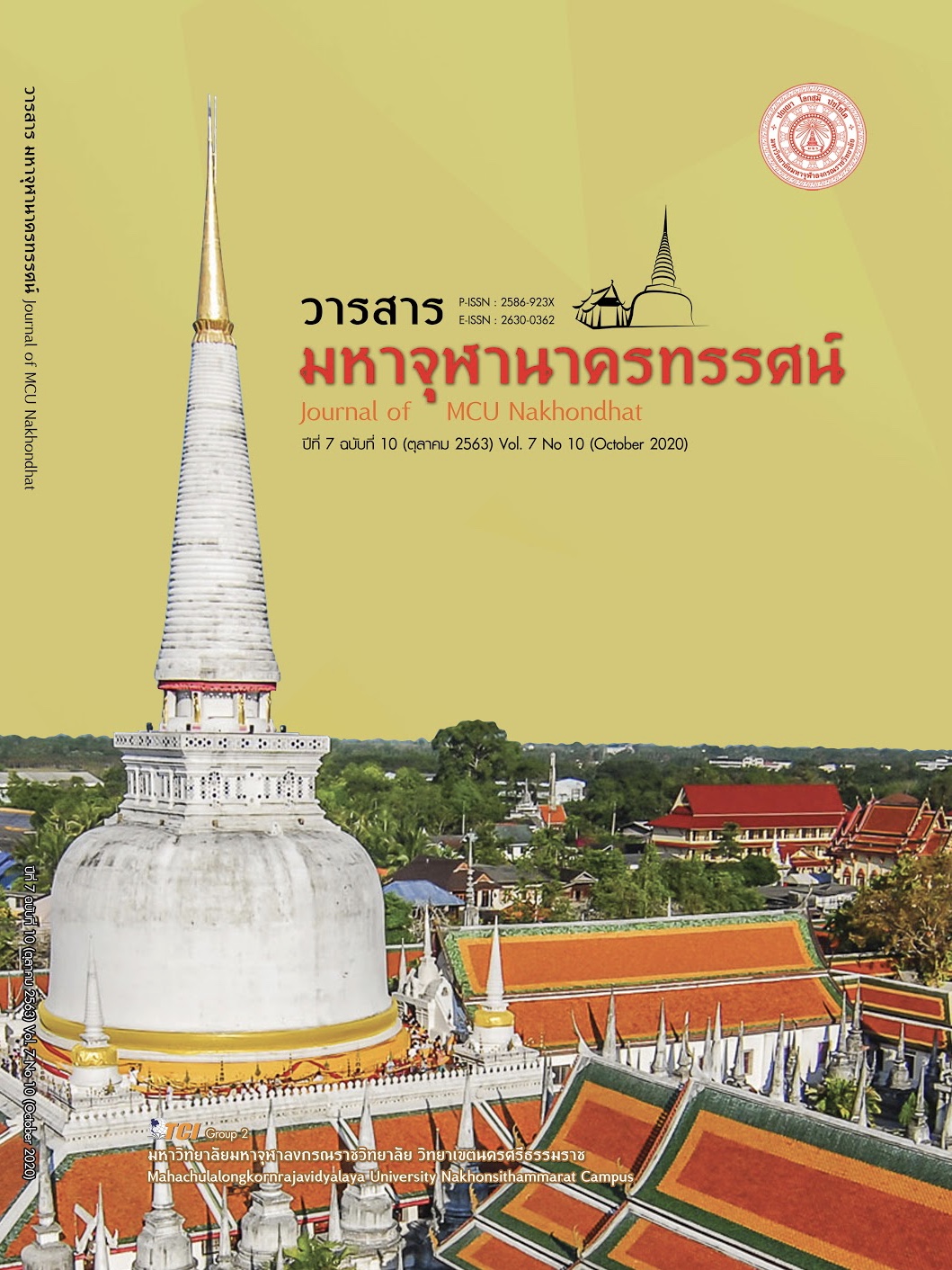DEVELOPMENT OF A PARTICIPATORY MANAGEMENT APPROACH FOR EDUCATIONAL INSTITUTION: ROI ET PRIMARY EDUCATIONAL SERVICE AREA OFFICE 2
Main Article Content
Abstract
The Objectives of this research article were 1) to study the current state of participation for educational institutions. Roi Et Primary Educational Service Area Office 2 2) to study the current state Desirable condition And guidelines for participatory management for educational institutions Roi Et Primary Educational Service Area Office 2 3) To develop a participatory management approach for educational institutions. Roi Et Primary Educational Service Area Office 2 The samples used in the research consisted of School administrators and teachers in educational institutions Under the Office of Roi Et Primary Educational Service Area 2, 61 administrators, 274 teachers, a total of 335 people. By simple random sampling (Multistage Sampling) The tools used for data collection were questionnaires, current conditions, participation for educational institutions. And a questionnaire on the teachers' participatory management guideline in educational institution administration. Under the Office of Roi Et Primary Educational Service Area 2, the statistics used for data analysis were mean, percentage, standard deviation. Income classification power, income between 0.22 - 0.78, and confidence in the whole of 0.96 The research found that; 1) Current conditions, participation of teachers in the administration of educational institutions. Under the Office of Roi Et Primary Educational Service Area 2, it was found that overall was at a high level. 2) Guidelines for participatory administration for educational institutions Under the Office of Roi Et Primary Educational Service Area 2The results of the study were as follows: 1) Guidelines for teachers' participation in education administration. It is a model that is correct, complete, practical, useful and should be used for further experimentation in other educational institutions. 2) School It consists of 5 main components and 20 sub - elements. 3) Evaluation of the educational institution participation guidelines For the Roi Et PrimaryEducational Service Area Office 2 by 7 experts in total, the suitability was at a high level. and is very possible.
Article Details
References
ธีระ รุญเจริญ. (2562). สภาพและปัญญาการบริหารและจัดการการศึกษาขั้นพื้นฐานของสถานศึกษาในประเทศไทย. กรุงเทพมหานคร: วี.ที.ซี. คอมมิวนิเคชั่น.
บุญชม ศรีสะอาด. (2545). การวิจัยเบื้องต้น. (พิมพ์ครั้งที่ 7). กรุงเทพมหานคร: สุวีริยาสาส์น.
พจนารถ วาดกลิ่น. (2556). ความสัมพันธ์ระหว่างการบริหารแบบมีส่วนร่วมกับการดำเนินงานด้านวิชาการ โรงเรียนในสำนักงานเขตบางกอกใหญ่ สังกัดสำนักการศึกษากรุงเทพมหานคร. ใน วิทยานิพนธ์ศึกษาศาสตรมหาบัณฑิต สาขาเทคโนโลยีการบริหารการศึกษา. มหาวิทยาลัยเทคโนโลยีราชมงคลธัญบุรี.
พชรวิทย์ จันทร์ศิริสิร. (2560). นโยบายและการวางแผนกลยุทธ์สำหรับสถานศึกษายุคใหม่. มหาสารคาม: อภิชาตการพิมพ์.
เมตต์ เมตต์การุณจิต. (2553). การบริหารจัดการศึกษาแบบมีส่วนร่วม: ประชาชน องค์กรปกครองส่วนท้องถิ่น และราชการ. (พิมพ์ครั้งที่ 3). นนทบุรี: บุ๊คพอยท์.
สมยศ อาพันศิริ . (2545). การบริหารแบบมีส่วนร่วม. กรุงเทพมหานคร: บรรณากิจ.
สุวัฒน์ จุลสุวรรณ์. (2562). ภาวะผู้นำทางการศึกษา. มหาสารคาม: ตักสิลาการพิมพ์.
อุดม เหลืองสด. (2545). การศึกษาการมีส่วนร่วมของผู้ปกครองและคุณภาพนักเรียนตามมาตรฐานการประกันคุณภาพ การศึกษาโรงเรียนบ้านเก่าวิทยา จังหวัดกาญจนบุรี. ใน สารนิพนธ์ศึกษาศาสตรมหาบัณฑิต สาขาวิชาการบริหารการศึกษา. มหาวิทยาลัยศรีนครินทรวิโรฒ.
Cohen, J. M. & Uphoff, N. T. (1981). Rural Development Participation: Concept and Measure For Project Design Implementation and Evaluation. New York: Cornell University Press.


